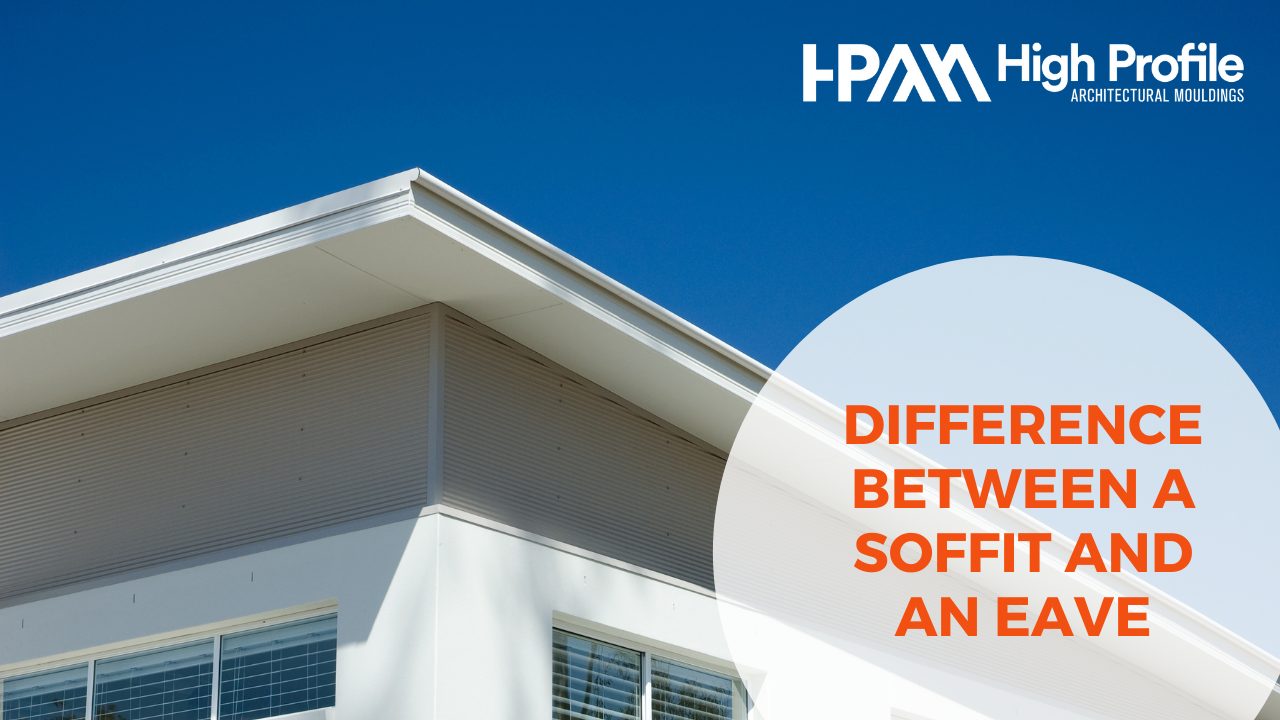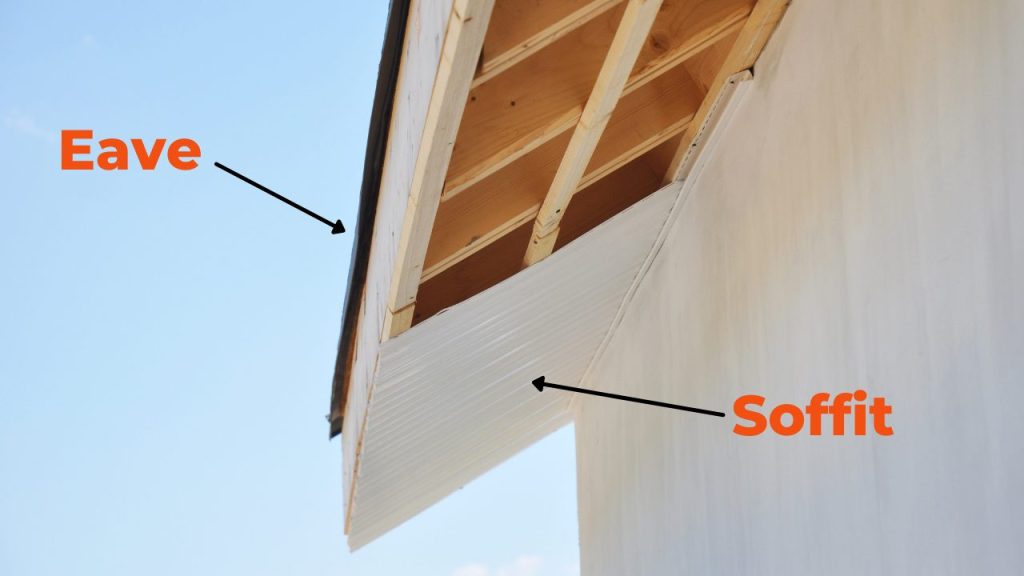Before we go into detail about what the difference between an eave and a soffit is, let’s take a step back and first explain what they each are.
EAVES
Put simply, an eave refers to the edges of your roof which usually extend over the face of your building. Fun fact: the term ‘eavesdropping’ which I’m sure you are all familiar with actually came about from the idea that anyone who stands on houses eavesdrop (the part of the eave where the raindrops to the ground) was probably trying to listen to whatever conversation was being had inside the house.
SOFFIT
Now that you’re familiar with what eaves are, let’s talk about the funny-sounding word, soffit. Despite what it may sound like, it has nothing to do with the word soft. It’s actually the complete opposite. A soffit refers to the (very hard) horizontal underside of an eave, connecting it to the main body of a building.
If you’re still a little confused about what the difference between an eave and soffit is then hopefully the image below will provide you with more clarification.
Why Eaves and Soffits Should be Considered When Renovating
When it comes to home renovations or upgrades, people usually focus all their attention on the prominent features of their house’s exterior. We’re talking about cladding, landscaping, and roofing. But to have a flawless exterior, you have to make sure not to overlook the little things. You know what they say. The beauty lays in the details. Think about it, if you renovate your entire home’s exterior except for your eaves and soffits, these will be quick to stick out like a sore thumb. The same goes for getting new eaves and soffits which style does not match the rest of your home. For a flawless finish, you want to ensure that all elements of your homes exterior work together in cohesion. This leads us to the all-important question of what material is best to use.
Why You Should Consider EPS
On top of deciding which colour and design you should choose for your house’s eaves and soffits; you also have to make a decision on what material you should use. Some people like the style of timber look, but using timber can be very expensive, high maintenance, and not to mention the problem of rotting and termites. Another option is installing eaves and soffits made from aluminium or vinyl, but just like wood these too have the downfall of being expensive and lacking durability. What many people are unaware of is that this look can be recreated with hard-coated expanded polystyrene also known as EPS.
So, let’s talk about EPS. This is the material that is used here at HPAM to essentially make all our products, from columns all the way down to mailboxes. One of our favourite things about this material is that it can be moulded into basically anything. That’s right, if you can imagine it then we can create it. EPS is also a very lightweight material. Not only does it make it easy to install (saving you money on scaffold hire and labour) but it also means it doesn’t need any added support as it doesn’t add any extra weight to your home’s exterior. Another benefit of EPS is its durability. It has a robust strength that can withstand extreme weather conditions making it perfect for outside areas. Best of all, it is affordable meaning you won’t have to compromise on aesthetics to save on expenses.
High Profile Architectural Mouldings are the experts in home exteriors on the Gold Coast. Discover how architectural mouldings from HPAM can improve your home today. Visit our website or get in touch with the team at info@highprofilemouldings.com.au or call 07 5568 4220



